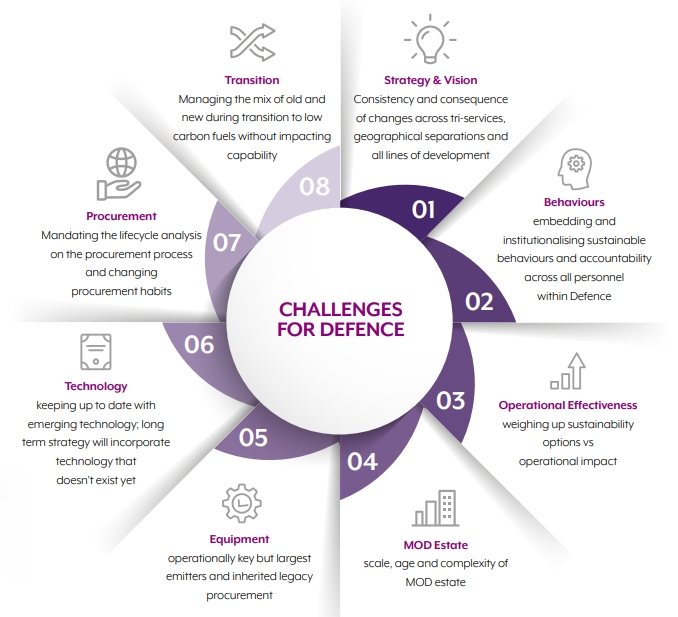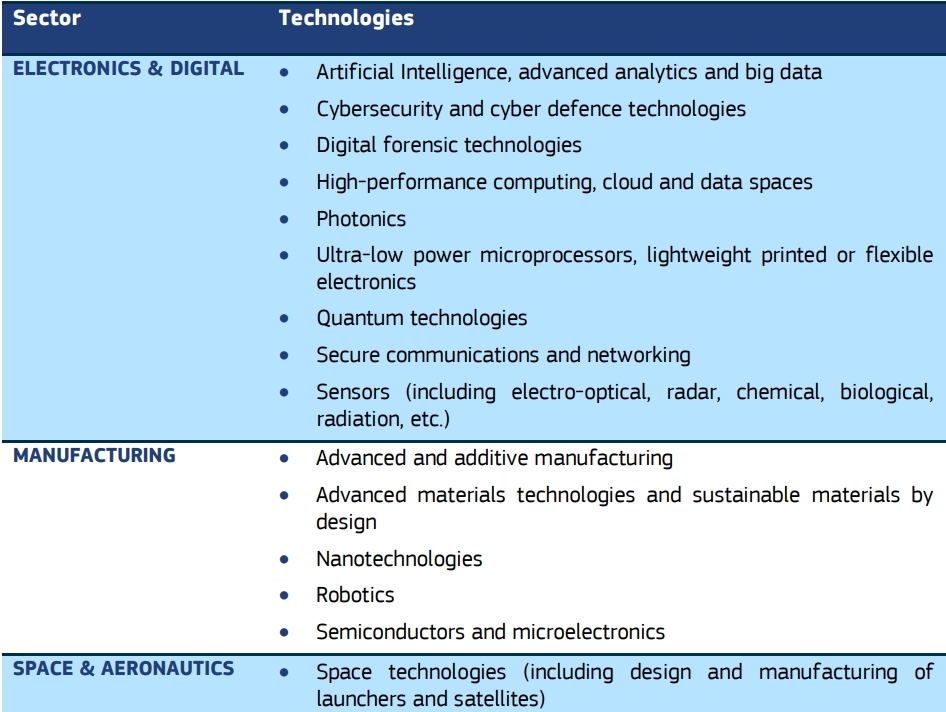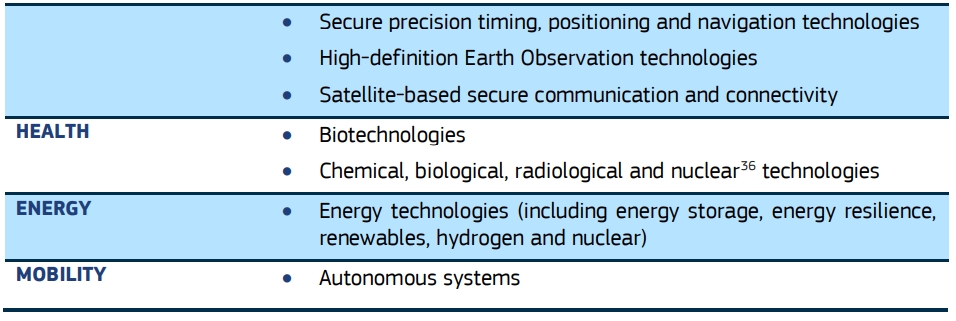There’s probably no industry in the world that hasn’t been affected by the COVID-19 pandemic. The defence industry has undergone some changes, though not as negative as other industries have. In any case, it will take some time for it to get back to the pre-pandemic level. That’s crucial for the European countries’ economy as it’s one of the main contributors with a turnover of €100 billion/year and more than 360,000 highly skilled jobs. The industry is expected to begin recovering in 2021 but there are a lot of barriers on its way to restoration. Let’s consider the challenges the aerospace and defence industries are facing today and what trends are leading in the year 2021.
Impact of COVID-19 Pandemic on the Industry

The defence system is one of the central participants of national crisis response programs. The industry was actively engaged in supporting citizens in terms of redefection (returning foreigners home during the pandemic), logistics, transportation of medical equipment, and disinfecting. Military medical staff provided support to civil health workers and was engaged in treatment measures at hospitals. The military forces provided their military and field hospitals and staff in 2019-2020 when the number of infected was enormous.
In late 2020 and in 2021, the armed forces still have been supporting the civil healthcare system by assisting in vaccination against COVID-19. For instance, the UK military medical workers have received training as part of a plan to be ready to depart to the sites where help is needed. Thus, they have already delivered the vaccines to Broughton House care home in Salford and vaccinated veterans there.
Pandemic Consequences for the Defence Industry
In the defence sector, the most crucial effects with the short-term and long-term run are as follows:
- Retraction of forces from current affiliated operations;
- Cancellation of military exercises in 2020;
- Supply chain and research and development operation disruptions;
- Financial and job losses;
- Increasing military equipment production and transportation costs;
- Reduction of air travelling volumes;
- Budget cuts, R&D underinvestments.
Though, as distinct from other industries, the defence dimension remains rather stable. Some countries have suffered losses but primarily accounting for commercial aerospace. Thus, Turkey’s total aerospace and defence exports declined by 16.8% in 2020 to $2.27 billion, compared with 2019’s $2.74 billion due to the pandemic.
Budgets for 2021 and further will be cut only in a couple of countries. For example, Russia is going to reduce military spending by 5% due to the pandemic’s negative consequences. In most European countries the defence budgets don’t have any alterations this year. In general, global defence spending is expected to grow by about 2.8% in 2021.
The aeronautical dimension, being part of the aerospace ecosystem that belongs to the Defence industry, is hard-hit by the 50% drop in turnover due to the pandemic restrictions.
EU Space Monitors to Track the Pandemic’s Consequences
To check the industrial and environmental impact of the coronavirus outbreak results, the EU uses Copernicus and Galileo satellites.
- Copernicus assists in evaluating the impact on traffic at borders between the EU Member States as the COVID-19 pandemic leads to medical equipment and goods flow disruptions as well as in mapping transitory health centres;
- Galileo is utilized as a geolocation means to show contamination regions and consider goods distribution between EU countries in a real-time environment. Its app also allows checking the coronavirus spreading.
Europe Striving for Sustainability

Environmental responsibility touches upon every sphere of human activity. Today, all industries do their best to support the Green Deal initiatives, especially this relates to the sectors responsible for enormous CO2 emissions, such as the energy sector that includes construction, heat and electricity, automotive industry, and others.
Read more: 2021 Automotive Industry Challenges and Trends
Let’s see what challenges and trends the Defence domain is facing in 2021 in this context.
EU Rules on Chemicals/Waste Effect on the EU Defence Industry
European Defence Agency has initiated research with the aim to study the impact of EU regulations on chemicals/waste on the Defence industry in Europe and elaborate recommendations on how to adhere to them with the mildest effect possible on the industry. They investigated the following six units against the background of existing REACH and CLP legislation points:
- Biocidal Products Regulation (BPR)
- Persistent Organic Pollutants Regulation (POP)
- Ozone Regulation regarding ozone depleting substances (ODS)
- Fluorinated Gases Regulation (F-gas)
- Directive on the Restriction of the use of certain Hazardous Substances in electrical and electronic equipment (RoHS)
- Revised EU Waste Framework Directive (WFD)/SCIP Database.
The research results have revealed that these regulations will have a significant impact on the development of European defence capabilities during the whole equipment life cycle. Experts suggest some recommendations concerning the implementation and adherence to the above-mentioned legislation pieces, including monitoring the substances applied in the defence sector and “raise awareness on commonalities and differences as well as interactions between the different chemicals regulations”. Therefore, one of the challenges for the Defence industry experts is to find a solution to mitigate the effect of the SCIP requirements on the defence dimension.
UK Defence Industry Investing in NZ50 Initiatives
According to the Roadmap for Sustainable Defence Support, the UK Defence industry is fully focused on following Net-Zero 2050 initiatives that include:
- Carbon emissions;
- Fuel and fuel substitutes and technologies;
- Sustainability through the lens of the circular economy, recycling, reduction in use;
- Sustainability-Enabling Technologies.
On its way to sustainability, the Defence industry is facing the following challenges:

They’ve created a roadmap to achieve their sustainability goals starting from the end of 2020 up to 2050.
European Green Deal: Aerospace and Defence Dimension

As the Defence Industry also involves the Aerospace domain, all challenges it faces, refer to the Defence industry, too. Thus, according to DG Defence Industry and Space Management Plan 2021, one of the main goals for this year is to reach carbon neutrality. Investigations in this area have been hindered by COVID-19, and the industry is in a more vulnerable state at the moment. As for the Defence sector, searching for solutions to reduce environmental and carbon footprint is on the 2021 agenda.
Environment State Monitoring with Copernicus Earth Observation System
In the above paragraph, we mentioned the Copernicus satellite used to monitor the pandemic consequences. This observation system works in five directions: atmosphere, climate change, emergency, marine, land, and security. In terms of environment and Green Deal regulations, it helps to monitor green gas emissions and helps to meet the Commission’s intentions to slow down climate change.
Striving for EU Tech Sovereignty
Today Europe is focused on ensuring tech sovereignty to decrease the tension of the US and China and to defend its strategic interests. In this context, a number of initiatives have been introduced.
EU Defence Fund
In 2018, the European Commission suggested a plan of a multiannual political agreement between the European Parliament and the European member states with the aim to encourage research and development in the defence sector. With its €7.953 billion budget, the EU Defence Fund is expected to provide favourable opportunities for the European Defence industry to initiate and support joint research projects between member states. The Fund started its activities on January, 1. It has all chances not only to rebuild the post-covid Europe but also strengthen it in all aspects thanks to the cooperation between different industries. In terms of the programme, one of the main challenges is to create projects that would be attractive for all stakeholders and comply with the Member States’ interests and arrange fruitful collaboration despite the difficulties caused by the COVID-19 pandemic.
Enhancing Synergies Between Civil, Defence, and Space Industries

The European Commission has adopted The Action Plan on synergies between Civil, Defence, and Space industries that will enable cross-fertilization between them and unleash the innovative technology development potential against the background of the approved fund opportunities.
Its main objectives are as follows:
- Making EU defence and space research and development programs bring beneficial results to citizens;
- Make civil developments in different industries contribute to the enhancement of the defence and space dimensions.
Copernicus and Galileo, which have been mentioned before, are a great example of the synergies between military, space, and civil domains. They’re used to monitor borders for military purposes, for environment protection objectives, tracking pandemic consequences, and many more.
EU Observatory of Critical Technologies
One of this year’s challenges for the defence industry in the framework of the synergies initiative is to achieve technological sovereignty between all EU countries. To this end, the Commission has created an EU Observatory of Critical Technologies that will work in cooperation with the European Defence Agency and the European Space Agency also engaging other stakeholders for collaboration. Its scope is limited to the technologies that are compatible with both civil, defence, and space dimensions.
Here are some examples of critical technologies that are relevant for civil, defence and space industries suggested in the Action Plan:


The work on the development of critical technologies will be based on the Commission’s roadmaps that rest on the research that is going to be conducted biennially.
Flagship Projects
Within the framework of the programme, they’re preparing to launch several groundbreaking projects: Drone technologies, Space-based secure connectivity, and Space traffic management.
‘EU Drone Technologies’ Project
This project aims to advance drone manufacturing technologies and make the defence industry benefit from the developments of small and medium businesses engaged in civilian drones production and ensure civil aeronautics will gain profit from the defence field. This project is part of the bigger initiative “Sustainable and Smart Mobility Strategy” whose aim is to make the EU transport system comply with ‘green standards’ and achieve digitalization maturity. Drones, as an example of zero-emission transport, have great potential and probably will be treated as electric cars in terms of sustainability and smart mobility. Under the scope of the project, experts will work on AI, advanced sensors and improvements in power sources.
‘Space-Based Secure Connectivity’ Project
The main objective of the project is to ensure access to secure high-speed connectivity for governmental and commercial communications through a multi-orbit space infrastructure. The technologies will create favourable conditions enabling European citizens to stay connected under any circumstances regardless of any threats including cyber attacks. The project outcomes are expected to strengthen Eupone’s strategic autonomy and flexibility even in periods of uncertainty and crises.
‘Space Traffic Management’ Project
The project is focused on developing and establishing rules and standards for space traffic management to prevent any accidents resulting from the increase in the number of satellites and space debris. It’s also part of the EU Space Programme initiated in 2018 and approved in December 2020. It’s intended to cover 2021-2027 years with a total budget of 14.8 billion euros. The project is also aimed at establishing technological sovereignty by making common standards for everyone.
Cyber Threats as a Results of Defence Industry Digitalization
One of the main challenges that have appeared as a result of the Defence Industry digital disruption is increased cyber threats. Therefore, the cyber defence has become an essential element of enhancing the digital resilience of the European Defence dimension. Cyberattacks are becoming more and more frequent because of the close association of military equipment, operations and informatics systems. Many European countries invest in cyber defence today.
For instance, France will allocate €25 billion till 2025 for cyber defence and double the number of employees in this dimension.
At the end of December 2020, the European Commission created the Cybersecurity Competence Centre and Network to advance and bolster the cybersecurity capacities of the European Union and assist in establishing a secure online environment.
Conclusion
One of this year’s primary challenges for the aerospace and defence industry is to overcome the COVID-19 pandemic consequences, which is especially relevant for the aerospace sector. This year, the European Defence industry will develop and operate according to the Action Plan aimed at establishing synergies between the civil, defence, and space dimensions based on the newly approved Defence Fund. Some of the main Defence industry development directions are:
- Achieving tech sovereignty;
- Striving for sustainability by adhering to the Green Deal rules;
- Working on the development of critical technologies that are beneficial for both civil and military sectors;
- Ensuring cybersecurity and creating a safe online environment;
- Implementing flagship projects as part of the Action Plan: Drone Technologies, Space-Based Secure Connectivity, and Space Traffic Management.

